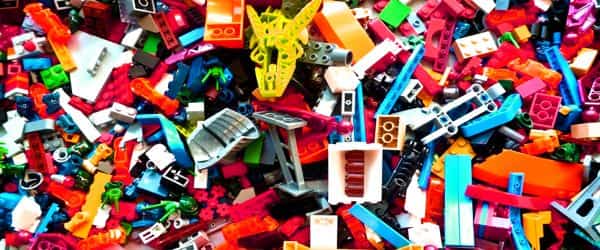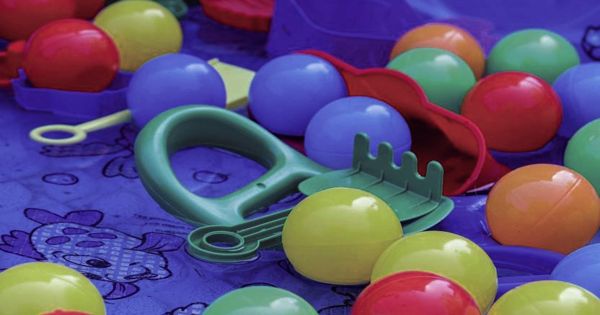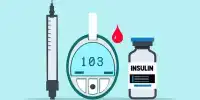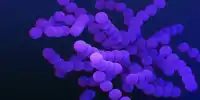It has long been recognized that a number of chemicals used in plastic toys in various parts of the world can be dangerous to human health. However, it is impossible for parents to work out how to stop plastic toys containing toxins that could pose potential health hazards to their children.
Regulations and labeling systems vary across regions and continents, and there is no international consensus that chemicals should be prohibited from being used in toys. Regulations and worldwide listings of ‘chemicals of interest’ in toys, for the most part, concentrate on certain types of substances with known toxic properties, such as phthalates, but do not include a broader variety of chemicals used in plastic toys.
Researchers from DTU and the University of Michigan, along with UN Environment, looked at this critical topic, reviewed data on chemical functions and quantities used in plastic toys, and quantified exposure of associated children and possible health hazards. They ranked chemicals according to their health risk and compared these findings with current priority lists from around the world. The research was conducted with free access in the journal Environment International.
New research suggests that more than 100 chemicals found in plastic toy materials may pose possible health risks to children. The study provides findings that may lead to stricter international regulations.
“Out of 419 chemicals used in rigid, soft, and foam plastic products used in children’s toys, we detected 126 compounds that could possibly affect children’s health by either cancer or non-cancer effects, including 31 plasticizers, 18 flame retardants, and 8 fragrances. Being hazardous in our sample suggests that, for these substances, the predicted exposure levels surpass regulatory reference doses (RfD) or the risk of cancer, which exceed regulatory risk thresholds. These chemicals should be prioritized for phase-out in toys and replaced by cleaner and more natural alternatives; “Peter Fantke, Professor at DTU Management and Principal Investigator of the report, says.
Nicolò Aurisano, the first author of the study and Peter’s Ph.D. student, states that the manufacturers of toys normally do not have any detail on the chemical content of toys, and the databases on the composition of toys are incomplete. Researchers were then required to gather and examine information on the chemical content of toys based on the chemical test results for individual toys published in 25 separate peer-reviewed reports.
Nicolò states further: “We have combined the observed chemical content of toy products with material characteristics and habits for the use of toys, such as how long a child usually plays with a toy, when it is placed in the mouth, and how many toys are used in a household per child. We used this knowledge to predict exposure using high-performance mass-balance models and compared exposure doses below which there is no unreasonable risk to children.”

Researchers find that children in western countries have an average of around 18 kilograms of plastic toys, which underlines the vast quantities of plastic that children are confronted by on a regular basis.
Chemicals reported by researchers as being of potential interest to children’s health include, for example, commonly recognised phthalates and brominated flame retardants, but also two plasticizers butyrate TXIB and citrate ATBC, which are used as alternatives to certain controlled phthalates.
“These replacements have shown signs of high non-cancer risk potential in exposed children and should be further assessed in order to prevent ‘regrettable substitutions’ where a single hazardous compound is substituted by a potentially harmful substitute. Overall, soft plastics cause higher exposure to some toxic chemicals, and inhalation exposure dominates the overall exposure of children, when children theoretically inhale chemicals that spread out of all toys in the room while normally handling just one toy at a time “Peter Fantke describes that.
A way toward safe use of chemicals in plastic toys
There are also lists that provide information on ‘chemicals of interest’ across substance and material applications. What is still unavailable, though, is any detail about the extent at which the use of chemicals in various applications can be healthy and sustainable. Here, researchers are introducing a new metric to benchmark the chemical content of toy products on the basis of exposure and harm.
Peter Fantke states the following: “Because the same chemicals can be present in varying proportions across toy products, the ‘Maximum Permissible Chemical Content (MACC)’ has been determined for all compounds confirmed to be found in plastic toys. Such knowledge will allow decision-makers to create metrics for different chemicals in different applications, but will also encourage toy producers to assess the amount of chemicals used for a certain purpose against such benchmarks.”
It would continue to be impossible for parents to prevent the use of plastic toys that could include toxic chemicals until authorities include all ingredients and fix the exposure of toys that are manufactured outside Europe and imported into the European market. A valuable piece of advice from experts is also to minimize the use of plastic products in general, limit the use of soft plastic toys, and try to ventilate your children’s rooms well every day.















